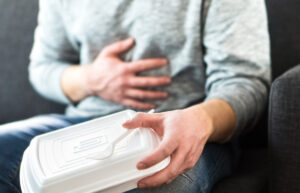If your food quality is slipping, food safety issues may not be far behind. Although food safety and quality are distinct characteristics of a food, they also are interconnected.
Issues that arise with food quality, such as a rise in consumer complaints, quality defects, etc., can indicate that the application of standards and practices are slipping. Thus, keeping a close eye on quality and any divergence, both within your facility and by suppliers, can provide an important indicator of pending food safety issues, enabling you to correct deficiencies before they result in recalls – or worse.
Poor product quality can be caused by a number of failures in a facility, including improper handling, storage, and processing – all of which also can lead to food safety issues. Similarly, the slippage or loss of quality by a supplier can cause deficiencies in incoming supplies that can then further deteriorate in your facility, even if correct practices are followed there. And all of it can be impacted by the global environment as well.
Take, for example, the current record high temperatures around the world. Hot, humid weather increases the potential for bacteria to grow, so increased time/temperature controls are critical at all points of the supply chain. So, while perishable food can generally be safely left out for two hours, when temperatures exceed 90°F, the safety time decreases to one hour. With quality often evidenced first, keeping an eye on both quality and food safety practices can help you prevent the further development of issues in both areas. If a burgeoning quality issue is detected and corrected promptly, it could prevent a food safety problem from developing at all.
Going to the other end of the food chain, surveys have shown that consumers see food safety and quality as interlinked, so if they deem a product to be of low quality, many will also deem it to be unsafe (and, all too often, they’ll tell this to the world on their social media posts). Additionally, survey respondents saw traceability as linked to food quality as well as food safety. And they’re not wrong! Incorporating both quality and safety tracking into your traceability initiatives (including those within your facility) can keep you a step ahead of potential issues.
Similar to the way that the tracking requirements of the new Traceability Rule are intended to help detect and prevent food safety issues across the supply chain, so too can the tracking of quality metrics both in your plant and supply chain help detect food safety “near misses” exposed by quality issues. Such metrics can include tracking of customer complaints, product defects or inconsistencies, packaging errors, slipping sanitation, etc.; and the analysis of these can provide an early detection warning of potential issues and enable you to determine – and correct – root causes.
Another way to analyze one’s quality practices to help prevent related food safety issues is to include quality parameters in your food safety culture analytics. When all managers and workers in your facility are consistently and collaboratively focused on food safety and quality that go well beyond any regulatory or consumer requirements, you will have a system that enables you to detect warning signs of a potential issue and correct it – before it results in a recall or worse.
So, if you are finding some slippage in quality, what should you do? First, work on understanding why there is slippage and where it is occurring – is it internal or the supply chain or a combination of both? Then focus on what the corrective action is and how to best prevent it from recurring.






